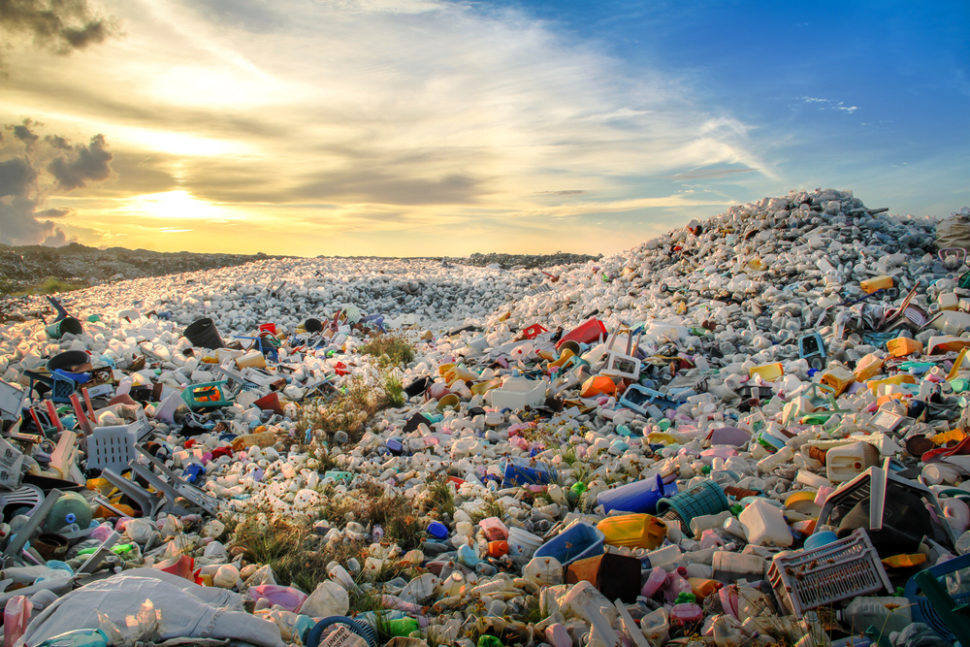Of all the materials we use every day, plastic is the one that could be the most poisonous and permanent heritage we pass on to future civilizations.
The word plastic comes from the Greek “plassein“, which means “to mould”. It is this malleability that has made plastic one of the most used materials by modern humanity. We’ve been producing plastic at frenetic rates, and the stats about plastic pollution and use are scary.
About seven decades ago (in 1950), the global production of plastic amounted to 1.5 million tons with a 2.5 billion global population. In 2016, the world produced over over 320 million tons of plastic to accommodate 7 billion people.
This far into the year, the world has produced over 3.5 trillion plastic bags, estimated to reach 5 trillion bags by the end of the year, most of them are thrown out and find their way into the sea.
Overall, plastic makes up 90% of all marine debris.
Every day, we dump 8 million pieces of plastic into the ocean, or one garbage truck worth of plastic every minute.
Right now, there are an estimated 5.25 trillion pieces of plastic floating in the ocean, weighing from a few micrograms up to thousands of tonnes.
Scientists have found the mark of marine plastic pollution in several marine species, such as in 100% of marine turtles, about 60% of whales, 36% of seals, and 40% of seabirds.
Every year, marine plastic pollution kills 1 million seabirds, and 100,000 marine mammals and turtles.
The world is getting plastified, little by little.
Plastic: The Toxic Legacy of the Anthropocene Man
The Anthropocene Era is leaving indelible scars on the planet, and its effects will change how our world will look in a distant future that the natural atmosphere could be completely stripped off.
And one chronic environmental headache will come from plastic waste.
Already weighing heavily on the world climate balance, levels of plastic pollution are getting to such extent that fossils millions of years in the future will bear a plastic stamp.
Yes, the plastic junk you throw out today will have deep and lasting effects, and will eventually show in future geological records.
According to geologist Dan Parsons, plastic pollution is so deep and widespread that the world might be entering a new era, the “Plastic Age”.
As the director of the Energy and Environment Institute at the University of Hull, Professor Parsons has also been selected as the chairman of a scoping group tasked with investigating the global plastic pollution from an environmental point of view.
Read More: New Ocean Cleanup Project Could Eradicate 50% of Ocean Plastic in 5 Years
″If you fast forward 10-20 million years into the future,” Dr Parsons told HuffPost UK, “we will have left an imprint in the geological record that will have two key characteristics – one being a stream of deposits from nuclear weapons detonations and a set of fossilized plastic remains encapsulated within the rocks of the future. There will be some future geologists scratching their heads and thinking: what were these folks up to?”
Well, “these folks” have been just trying to make their life easier, and messed up the planet in the process, especially the oceans.
If you think the Great Pacific Garbage Patch, the infamous floating plastic continent, is a worrying problem, the plastic junk that’s lying deep in the waters makes it look like the tip of a plastic iceberg. And there are more “floating garbage continents”.
In a recent study, researchers from Newcastle University say that only 0.01 of plastic waste is on the surface, and 99.99% (393 million tons of plastic) is hidden deep in the world’s oceans.
Researchers also suspect the existence of more “plastic continents” yet to be discovered, one could be in the Gulf of Guinea.



















if we humans shall have a chance to leave our planet healthy to the next generation( those born from now) we have to stop producing plastic! We do not NEED it- and 90% of all plastic produced is used once. Imaging the CO2 footprint from the oil production used to produce plastic now. 18% of all oil produced now is going to the plastic industry! Stopping the plastic production will give us a tremendeous reduction in Co2 gases. And- the fact that plastic now has entered our foodchain and drinking water, should really be an eyeopener to all of us! And it kills millions of the planets creatures, birds, fish, mammals and even the microscopic small ones. I challenge the #worldleaders #banallonetimeuseplasticnow globally
Huge problem.